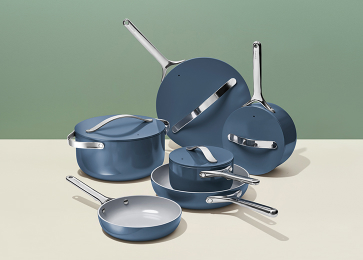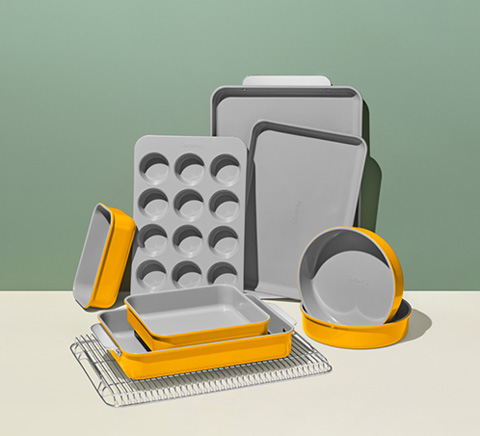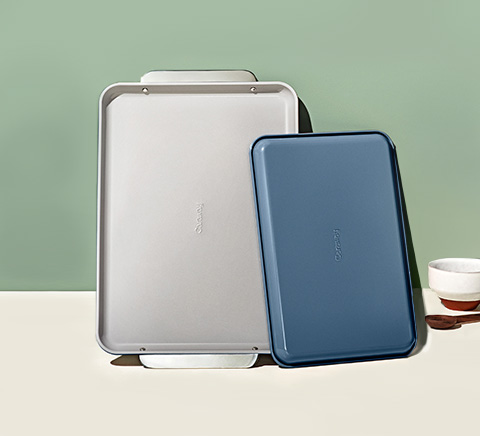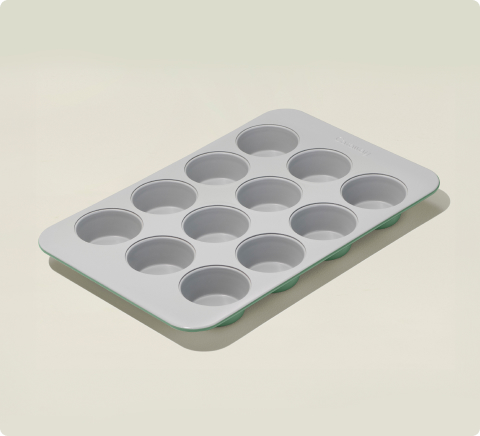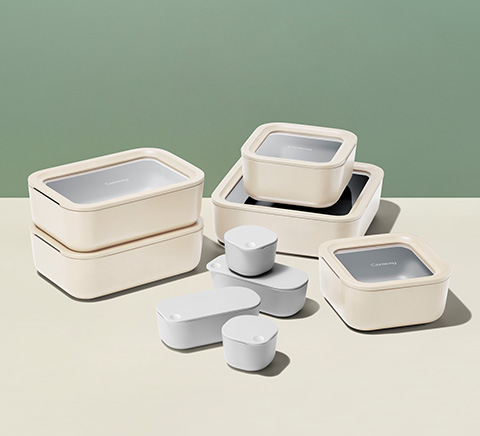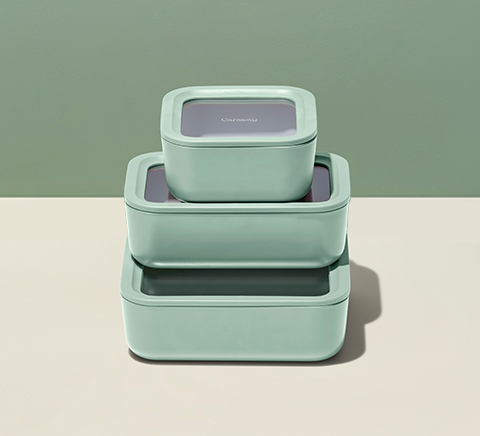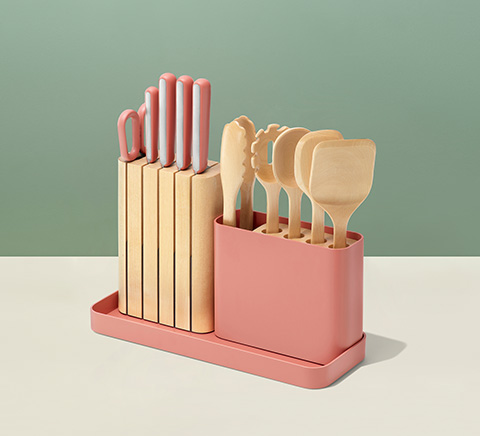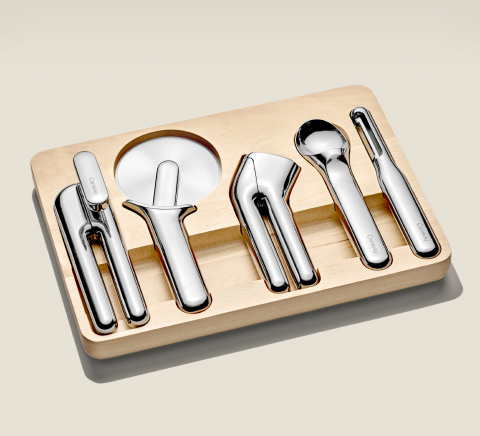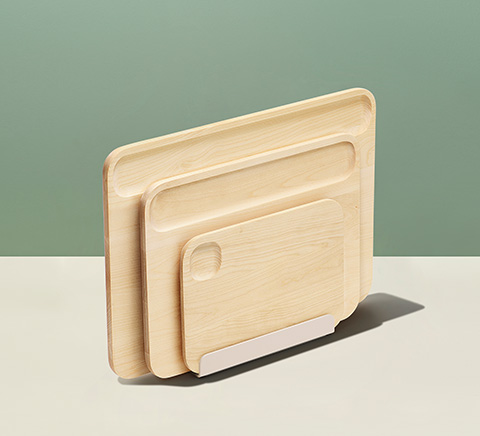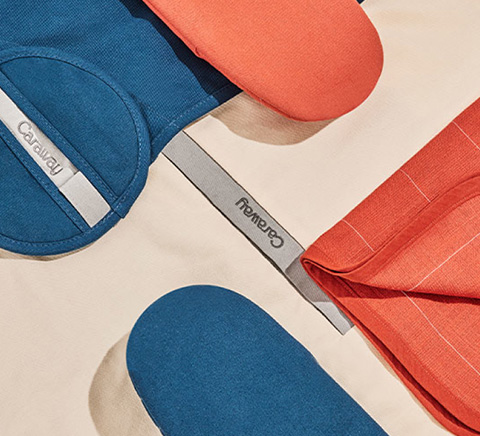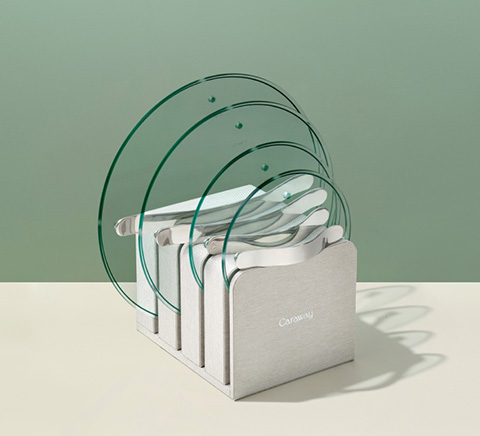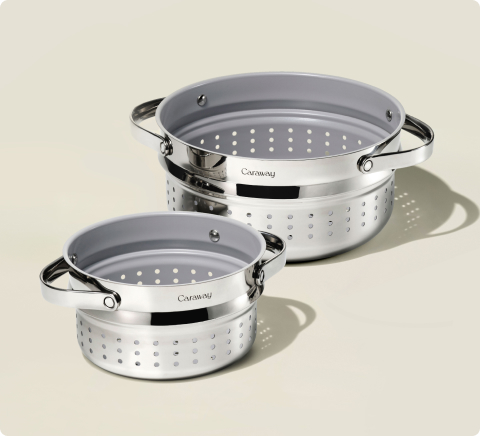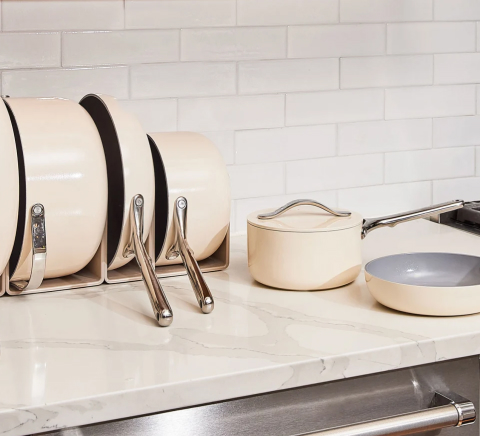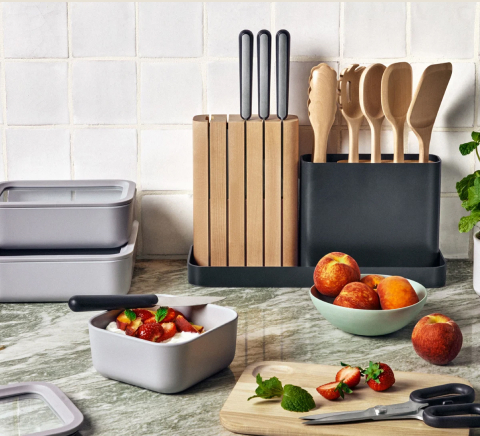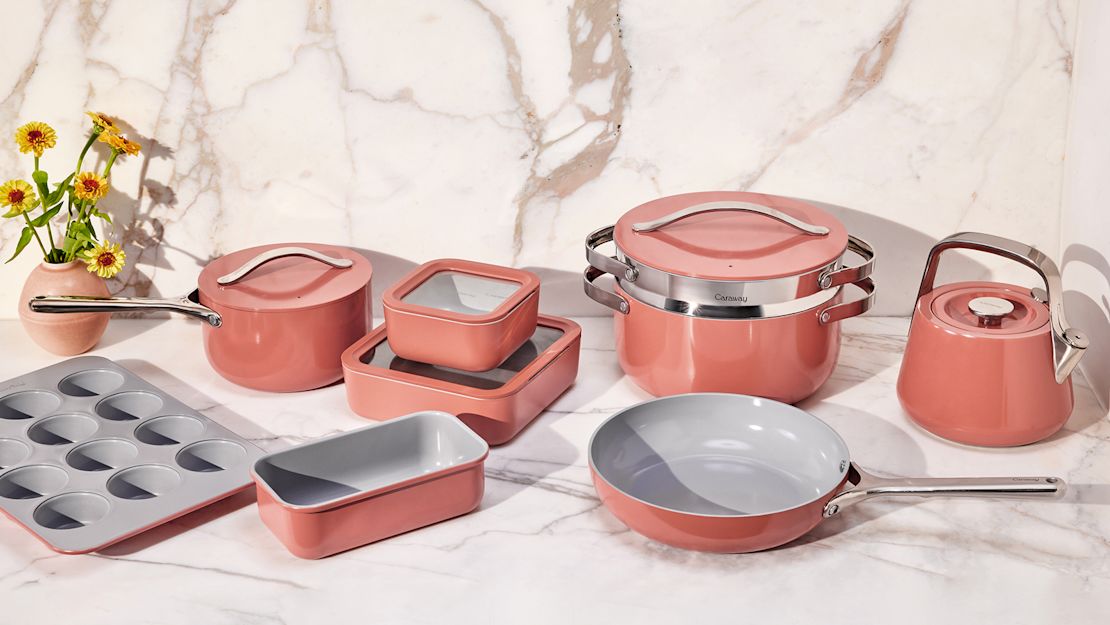In the world of cookware, ceramic pans are celebrated for their sleek design, non-stick convenience, and healthier cooking options. However, even the best tools need a little TLC to keep them at their peak.
Let's dive into why a well-maintained pan can be your kitchen's best friend and how a little attention can extend its life, ensuring every meal is as flawless as the first.

Why Is Proper Care Important for Ceramic Pans?
Proper care of ceramic pans isn't just about cleanliness but maintaining their integrity and functionality over time.
Here's why:
-
Preserves Non-Stick Surface: Regular and correct cleaning keeps the non-stick surface functioning, preventing food from adhering and ensuring a smoother cooking experience.
-
Extends Lifespan: With the right care, ceramic pans can last for years, saving you money and the hassle of frequent replacements.
-
Maintains Aesthetic Appeal: Ceramic cookware is known for its stylish appearance. Proper cleaning helps retain its beauty, making it a showpiece in your kitchen.
-
Enhances Food Safety: Keeping your pan clean avoids the buildup of harmful bacteria, ensuring your food is always safe to eat.
-
Optimizes Cooking Performance: A well-maintained pan distributes heat more evenly, allowing for better cooking results and avoiding hot spots that can ruin dishes.
Caring for your ceramic pans with gentleness and the correct techniques upholds their quality and enriches your cooking experience.
What Causes Ceramic Pans To Burn and How Can It Be Prevented?
In the culinary world, the harmony between your ceramic pan and the ingredients can sometimes face a heated challenge, literally. The crux of many kitchen dilemmas, especially those resulting in burnt pans, often boils down to an oversight in oil smoke points.
What's a Smoke Point?
The smoke point of an oil is the temperature at which it stops shimmering and starts smoking, signaling that it's beginning to break down. This breakdown not only affects the flavor and nutritional value of the oil but also contributes to the residue that can accumulate on your ceramic pans, leading to those stubborn burnt spots.
-
Avocado Oil: With a smoke point of around 520°F (271°C), it's ideal for high-heat cooking.
-
Canola Oil: A versatile choice with a smoke point of approximately 400°F (204°C).
-
Coconut Oil: Best for medium-heat cooking, it has a smoke point of about 350°F (177°C).
-
Extra Virgin Olive Oil: Suited for low to medium heat, its smoke point varies between 320°F (160°C) to 410°F (210°C).
-
Peanut Oil: With a smoke point around 450°F (232°C), it's great for frying and high-heat tasks.
-
Sesame Oil: A smoke point of around 410°F (210°C) makes it suitable for medium to high heat.
Any Tips To Prevent Burns?
Understanding smoke points lays the groundwork for preventing burns, but there are additional strategies to keep your ceramic pans in top shape:
-
Opt for High Smoke Point Oils for High-Heat Cooking: Reserve oils like avocado and peanut for searing and frying, where temperatures soar.
-
Monitor the Temperature: Ceramic pans excel in heat retention, which means they don't need as much firepower to do their job. Keeping the flame on medium or lower can prevent overheating.
-
Preheat Properly: A gradual warm-up allows you to gauge the temperature better and adjust accordingly before adding oil and food.
-
Invest in a Thermometer: For those precise recipes, a kitchen thermometer can be a handy tool in avoiding overheating your pan and oil.
By marrying the right oil with the appropriate cooking temperature, you ensure the longevity of your ceramic pans and elevate your cooking, turning each meal into a testament to your culinary care and understanding.

6 Pro Tips for Cleaning Ceramic Pans
Maintaining the sleek, non-stick surface of your ceramic pans requires a bit of know-how and the right approach.
Here are some pro tips to keep your ceramic cookware looking and performing its best, ensuring every flip, sauté, and sear is as satisfying as intended.
1. Embrace Gentle Cleaning After Each Use
The key to a long-lasting ceramic pan is simple: gentle, consistent cleaning. After each use, let the pan cool down before washing it with warm, soapy water and a soft sponge or cloth. This prevents thermal shock and maintains the integrity of the non-stick surface.
2. Tackle Burnt Food With Care
We've all been there---distracted for a moment, and suddenly, dinner's stuck to the pan. When faced with burnt food, fill the pan with water and add a dash of dish soap.
Let it simmer on low heat for a few minutes. This loosening-up trick allows you to easily remove the remnants without the need for harsh scrubbing.
3. Say No to Harsh Chemicals and Abrasives
Your ceramic pan is durable but not indestructible. Using abrasive pads or harsh chemical cleaners can erode the non-stick coating over time. Stick to mild dish soap and soft cleaning tools to preserve its surface.
4. Stubborn Stains Call for Baking Soda
For those stubborn stains that won't budge, a paste of baking soda and water is your best friend. Apply the paste gently on the affected area, let it sit for a few hours or overnight, then wash as usual. This mild abrasive action helps lift stains without damaging the pan.
5. Don't Forget the Exterior
The bottom of your pan deserves attention, too. A mixture of vinegar and water can help remove exterior stains and restore shine. Just make sure to rinse thoroughly and dry it to prevent any damage to the pan's exterior finish.
6. Store Your Pans Properly
Avoid stacking your ceramic pans directly on top of each other as this can lead to scratches on the non-stick surface. Use pan protectors or our complimentary storage racks that come with our pans. This small step can significantly extend the life of your cookware.

Long-Term Care for Ceramic Pans
Ceramic pans aren't high maintenance, but a little care goes a long way in preserving their performance.
Here are a few strategies to keep yours in top condition:
-
Use Ideal Utensils: Wooden or silicone spoons have an edge over metal ones as they prevent any scratching of the cherished non-stick surface.
-
Avoid Extreme Temperature Changes: Don't subject a hot pan to cold water immediately, as it may lead to warping. Allow it to cool naturally.
-
Optimize Heat Usage: Ceramic pans distribute heat efficiently, so you don't need a high flame. Lower heat settings can save energy and prevent damage to your pan.
Signs It's Time To Retire Your Old Ceramic Pans
Even the best ceramic pans don't last forever, and recognizing when they've reached the end of their culinary journey is crucial for your cooking experience and safety.
Here are signs that it's time to retire your beloved cookware:
-
Surface Degradation: If the once-smooth ceramic surface shows significant scratching or pitting, it's a sign that the pan's non-stick capabilities are compromised. These imperfections can lead to food sticking and burning more easily.
-
Coating Peeling Off: When the ceramic coating begins to peel or flake, it's definitely time to say goodbye. Using pans in this condition can lead to pieces of the coating mixing into your food.
-
Uneven Cooking: A warped or bent pan that doesn't sit flat on the stove will cook food unevenly, which can ruin dishes and indicate that the structural integrity of the pan is compromised.
-
Permanent Discoloration: While some discoloration over time is normal, excessive staining that can't be cleaned away often suggests deeper damage to the coating, affecting performance and hygiene.
-
Handle Looseness or Damage: A loose or damaged handle can be a safety hazard, risking spills or burns during cooking. If tightening the handle doesn't solve the issue, it's time for a replacement.
When these signs appear, it's time to consider a replacement. And what better choice than upgrading to a new, high-quality, non-toxic ceramic pan?
Our Ceramic-coated Cookware meets the mark for style and efficiency and champions healthier cooking with its eco-friendly, non-toxic surface. Designed to stand the test of time with the proper care, these pans ensure your meals are not only cooked to perfection but done so in a way that's better for you and the planet.
The Bottom Line
Caring for your ceramic pans is an investment in your culinary future. Through gentle cleaning, mindful usage, and embracing the right tools, you've given your cookware the respect it deserves, elevating every meal from simple dishes to gourmet creations.
But recognizing when it's time to move on is just as crucial. Retiring your well-used pans doesn't mark the end but a new beginning with Caraway's non-toxic ceramic cookware.
Seamlessly integrating into any kitchen, our pans promise not only a continuation of your culinary journey but an enhancement of it. Each dish prepared is a testament to your commitment to quality, health, and sustainability.
Here's to the meals yet to come and the cookware that makes them memorable.
Sources:
What's a Smoke Point and Why Does it Matter? | Serious Eats
DIY Solutions for Your Toughest Laundry Stains | Environmental Working Group
Pots and Pans to Avoid and What to Consider Instead | AARP
